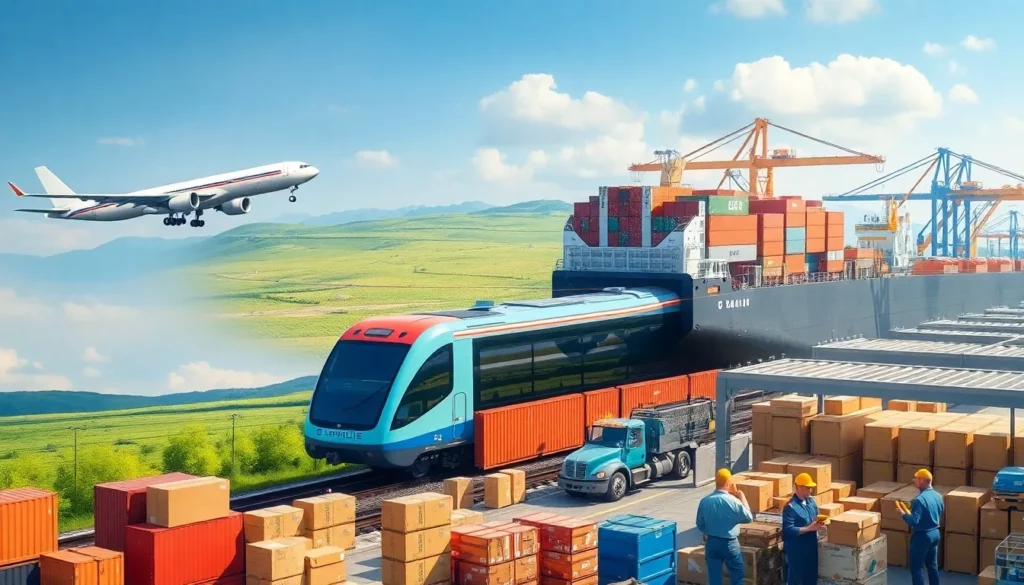Selecting the right shipping method for importing goods from China to Belarus can make or break your supply chain. Your choice depends on your budget, timeline, and cargo specifics. This guide equips you with the knowledge to pick the optimal solution, ensuring your goods arrive safely, on time, and within budget.
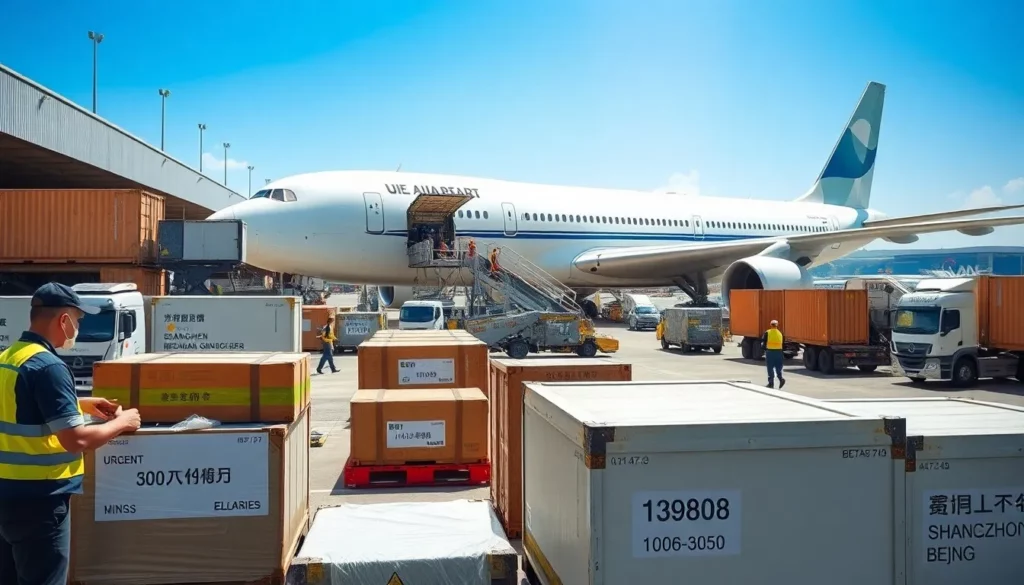
Freight Option
Air Freight: Speed for Urgent and High-Value Cargo
If time is of the essence, air freight is your fastest option, delivering goods from China to Belarus in 3–7 days. It’s perfect for high-value or time-sensitive shipments that can’t afford delays.
Is Air Freight Right for Your Shipment?
Air freight suits specific scenarios, such as:
- Urgent orders needing quick delivery
- High-value items like electronics, fashion, or medical supplies
- Perishable or temperature-sensitive goods
- Shipments under 500 kg prioritizing speed
Tip: For small, high-priority loads, air freight minimizes inventory holding costs despite higher rates.
Key Air Freight Routes and Airports
Your shipments typically depart from major Chinese hubs:
- Shanghai Pudong International Airport (PVG)
- Guangzhou Baiyun Airport (CAN)
- Shenzhen Bao’an International Airport (SZX)
- Hong Kong International Airport (HKG)
They arrive at Minsk National Airport (MSQ), often via direct flights or transshipment hubs like Warsaw or Vienna. A single direct Beijing–Minsk route is available, ideal if your supplier is near Beijing.
Transit Times and Cost Breakdown
Expect 3–5 days for air freight delivery, with costs driven by weight, dimensions, and service level. Rates range from $3.80–$4.80 per kg, with discounts for larger volumes.
| Origin | Weight | Rate per kg (USD) |
|---|---|---|
| Shanghai | 100 kg / 300 kg | $4.10 / $3.80 |
| Guangzhou | 100 kg / 300 kg | $4.20 / $3.90 |
| Shenzhen | 100 kg / 300 kg | $4.30 / $3.00 |
| Beijing | 100 kg / 300 kg | $4.40 / $3.10 |
| Hong Kong | 100 kg / 300 kg | $4.00 / $3.70 |
Best Practice: Request volume-based quotes to optimize costs for shipments over 300 kg.
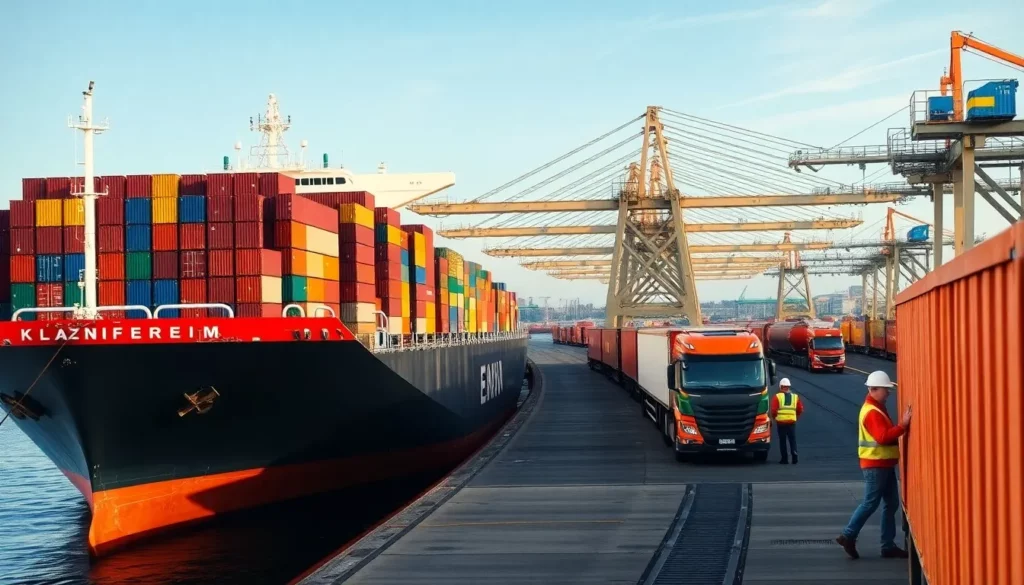
Sea Freight: Budget-Friendly for Bulk Shipments
Despite Belarus being landlocked, sea freight offers a cost-effective solution for bulk cargo. Goods ship to European ports, then move to Belarus by truck or rail.
FCL vs. LCL: Which Suits Your Needs?
You have two sea freight options:
- Full Container Load (FCL): Best for large shipments filling a container, offering faster transit, better security, and cost savings for high volumes.
- Less than Container Load (LCL): Ideal for smaller loads, where you pay only for your cargo’s space in a shared container, though transit times may increase due to consolidation.
Example: A furniture importer shipping 10 pallets might choose LCL to save costs, while a retailer with 40 pallets opts for FCL to speed up delivery.
Main Sea Routes via European Ports
Your cargo typically arrives at:
- Klaipeda, Lithuania
- Gdansk, Poland
- Riga, Latvia
From there, trucks or trains deliver to Belarusian cities like Minsk, Grodno, or Brest, combining sea freight’s affordability with efficient land transport.
Sea Freight Transit Times
Sea freight takes 40–50 days, ideal for non-urgent shipments. Transit times vary by route:
| Origin Port (China) | Destination (via) | Transit Time (Days) |
|---|---|---|
| Shanghai | Klaipeda | 43 |
| Shanghai | Riga | 45 |
| Shenzhen | Klaipeda | 37 |
| Shenzhen | Riga | 39 |
| Qingdao | Klaipeda | 48 |
| Qingdao | Riga | 50 |
Note: FCL times shown; add 7–10 days for LCL.
Important Warning: Plan for extra time during peak seasons to avoid port congestion delays.
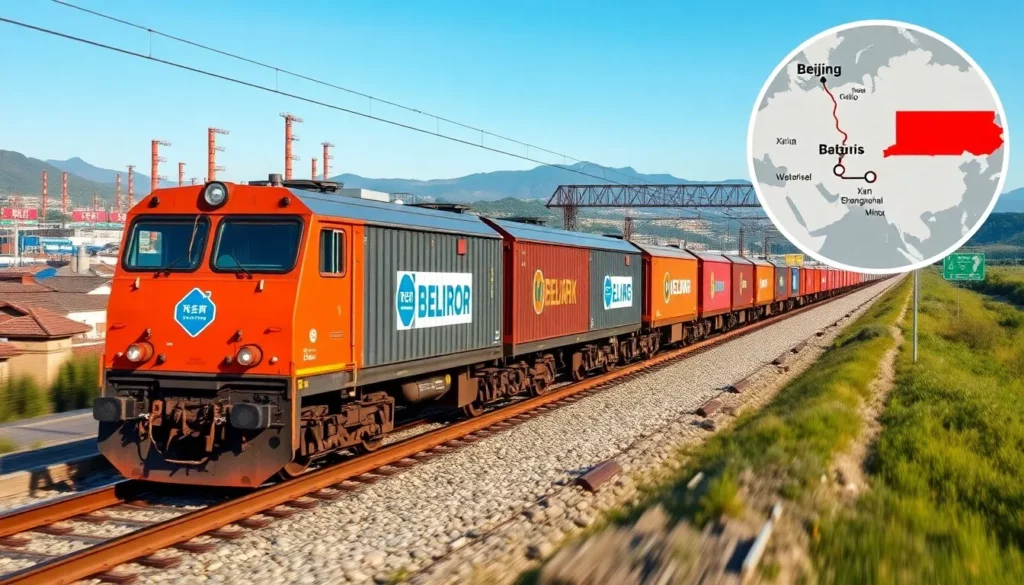
Rail Freight: Balancing Speed and Cost
Rail freight, via the China-Europe Railway Express, offers a middle ground, delivering in 12–18 days at lower costs than air freight but faster than sea.
Key Rail Routes to Belarus
Trains depart from Chinese cities like:
- Xi’an
- Chongqing
- Zhengzhou
- Yiwu
They arrive at Belarusian hubs like Minsk, Brest, or Orsha. A new Beijing–Minsk route, launched in May 2025, further strengthens connectivity.
Rail vs. Air vs. Sea: A Comparison
Rail freight strikes a balance:
| Method | Transit Time | Cost Range (USD) | Best For |
|---|---|---|---|
| Air Freight | 3–7 days | $3.80–$4.80/kg | Urgent, high-value goods |
| Rail Freight | 12–18 days | $2,550–$4,050/container | Medium-urgency shipments |
| Sea Freight | 35–45 days | $2,950–$4,000/40ft | Non-urgent bulk cargo |
Best Practice: Use rail for mid-sized shipments needing faster delivery than sea without air freight’s premium price.
Ideal Cargo for Rail
Rail suits:
- Medium-sized industrial goods
- Bulk consumer products or raw materials
- Shipments needing timely delivery without air freight costs
- Full or specialized containers
The Beijing–Minsk route, carrying 293 tonnes in 55 containers, takes about 15 days, boosting trade under the Belt and Road Initiative.

Express Courier: Small Parcels and Documents
For small shipments or documents, express couriers like DHL, FedEx, UPS, or TNT offer door-to-door delivery in 1–3 days.
When to Use Express Couriers
Choose couriers for:
- Packages under 70 kg
- Product samples or prototypes
- Urgent documents
- High-value items needing tracking
- E-commerce orders
Example: An electronics firm sending prototypes to Minsk uses DHL for speed and real-time tracking.
Delivery Times and Tracking
Expect 1–3 days, depending on origin and service level. Couriers provide robust tracking, covering:
- Pickup from your Chinese supplier
- Export and import clearance
- Final delivery in Belarus
Tip: Use tracking to plan receiving and avoid delays in your workflow.
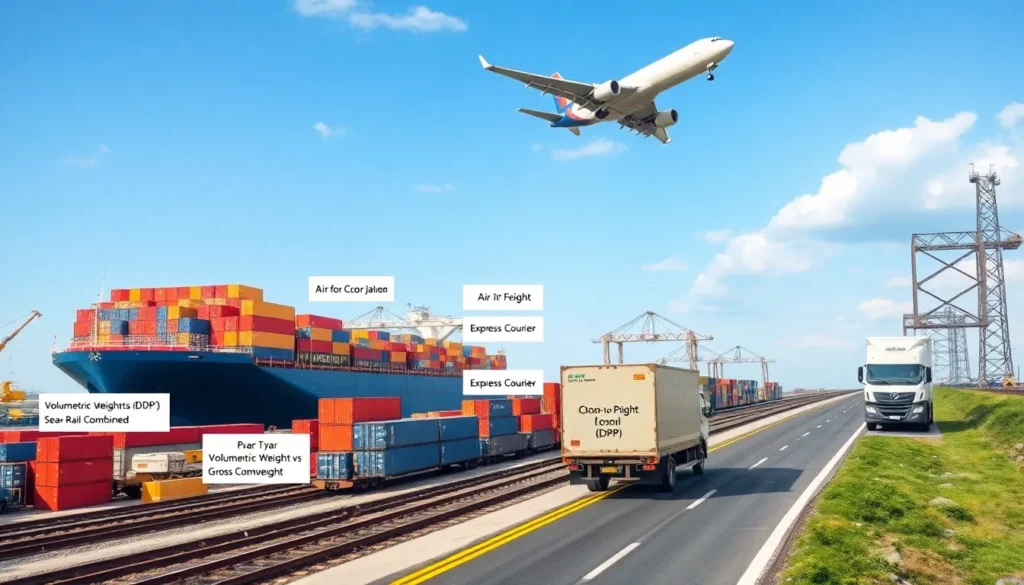
Understanding Your Total Shipping Costs
To budget accurately, you need a clear picture of all costs involved in shipping from China to Belarus, beyond just freight rates.
What Drives Your Shipping Quote
Several factors shape your costs:
Gross Weight vs. Volumetric Weight
Carriers charge based on the higher of actual or volumetric weight, calculated from your cargo’s dimensions. Bulky, lightweight items often incur higher costs due to space usage.
Example: A shipment of foam packaging weighing 50 kg but occupying 2 cubic meters may be charged as 333 kg volumetrically (using the standard 1:6000 cm³/kg formula).
Shipping Method’s Impact on Costs
Each method has unique pricing:
| Method | Cost (USD) | Transit Time | Best For |
|---|---|---|---|
| Air Freight | $3.80–$4.80/kg | 3–7 days | Urgent, light cargo |
| Rail Freight | $2,550–$4,050/container | 12–18 days | Medium cargo, stable deadlines |
| Sea Freight | $2,950–$4,000/40ft | 35–45 days | Non-urgent full containers |
| Express Courier | $6.50–$9.00/kg | 6–10 days | SMEs, samples, e-commerce |
| Door-to-Door (DDP) | $3,200–$4,200/40ft | 15–20 days | Full containers, taxes included |
| Sea+Rail Combined | $2,800–$3,800/40ft | 35–45 days | Cheapest for large shipments |
Incoterms and Cost Allocation
Incoterms clarify who pays what:
- FOB (Free On Board): Your supplier covers costs to the Chinese port; you handle everything after.
- CIF (Cost, Insurance, Freight): Supplier pays to the destination port, but you manage Belarusian clearance and inland transport.
- DDP (Delivered Duty Paid): Supplier handles all costs, including duties, to your Belarus address.
Best Practice: Choose FOB for control over international shipping while limiting supplier responsibilities.
Peak Season and Rate Fluctuations
Rates vary due to:
- High demand in Q4 or pre-Chinese New Year
- Fuel price changes
- Limited space during busy periods
- Equipment shortages
Important Warning: Book early during peak seasons to secure space and avoid surcharges.
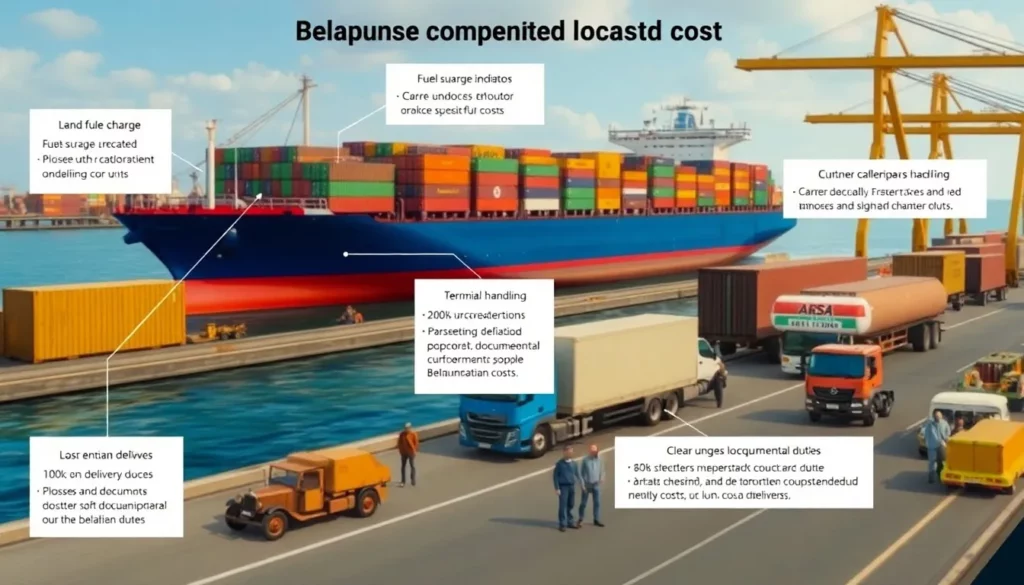
Calculating Your Full Landed Cost
Your total cost includes several components:
Freight Charges Breakdown
Beyond base rates, expect:
- Fuel surcharges tied to oil prices
- Security and carrier fees
- Terminal handling at origin and destination
- Documentation costs
Belarusian Duties, Taxes, and Tariffs
Imports face:
- EAEU Common Customs Tariff duties, based on HS codes
- 20% VAT (10% for food/medicines, 25% for telecom)
- Excise taxes on alcohol, tobacco, or fuel
Tip: Use a customs broker to verify HS codes and calculate duties accurately.
Additional Fees
Factor in:
- Terminal handling at ports or airports
- Customs brokerage fees
- Cargo insurance (0.3–0.5% of shipment value)
- Storage costs if delayed
Local Delivery Costs in Belarus
Final transport includes:
- Trucking from port/terminal to your address
- Delivery appointment fees
- Last-mile charges for door-to-door
Example: A Minsk delivery from Klaipeda might add $500–$800 in trucking costs for a 40ft container.

Picking a Trusted Freight Forwarder for Belarus
A reliable freight forwarder is your key to seamless China-to-Belarus shipping, handling logistics, costs, and customs with expertise.
What to Look for in a Freight Forwarder
Evaluate forwarders based on:
Experience on the China-Belarus Route
Choose partners with:
- Proven success shipping between China and Belarus
- Offices or agents in both countries
- Knowledge of Belarus’s landlocked logistics
- Expertise in EAEU customs rules
Tip: Ask for case studies in your industry, like electronics or textiles, to confirm relevant experience.
Service Range
Ensure they offer:
- Air, sea, rail, and express options
- Door-to-door solutions
- Customs brokerage
- Warehousing and distribution
- Supplier consolidation
Best Practice: Opt for a forwarder who can manage your entire logistics chain to reduce coordination headaches.
Local Presence in Belarus
Verify:
- Offices or strong partners in Belarus
- Ties to customs authorities
- Relationships with major carriers
- Staff familiar with local regulations
Example: A forwarder with Minsk staff can quickly resolve customs issues, saving you days.
Certifications and Licenses
Check for:
- Belarus customs broker registration
- NVOCC license for sea freight
- IATA certification for air freight
- FIATA membership

Vetting Your Freight Forwarder
Before signing on, do your homework:
Testing Customer Support
Assess:
- Response speed to your inquiries
- Clarity of answers
- Dedicated account managers
- 24/7 support for emergencies
- Multilingual communication
Tip: Email a complex question to gauge their expertise and responsiveness.
Comparing Quotes
Request detailed quotes and compare:
- Transparency of all fees
- Included/excluded services
- Pricing consistency
- Competitive rates
- Flexible payment terms
Best Practice: Use identical shipment specs across quotes for fair comparisons.
Checking Reputation
Investigate:
- Online reviews and testimonials
- Industry-relevant case studies
- Client references for China-Belarus shipments
- Years in business
Example: A reference call with a similar importer can reveal how the forwarder handles delays or customs disputes.
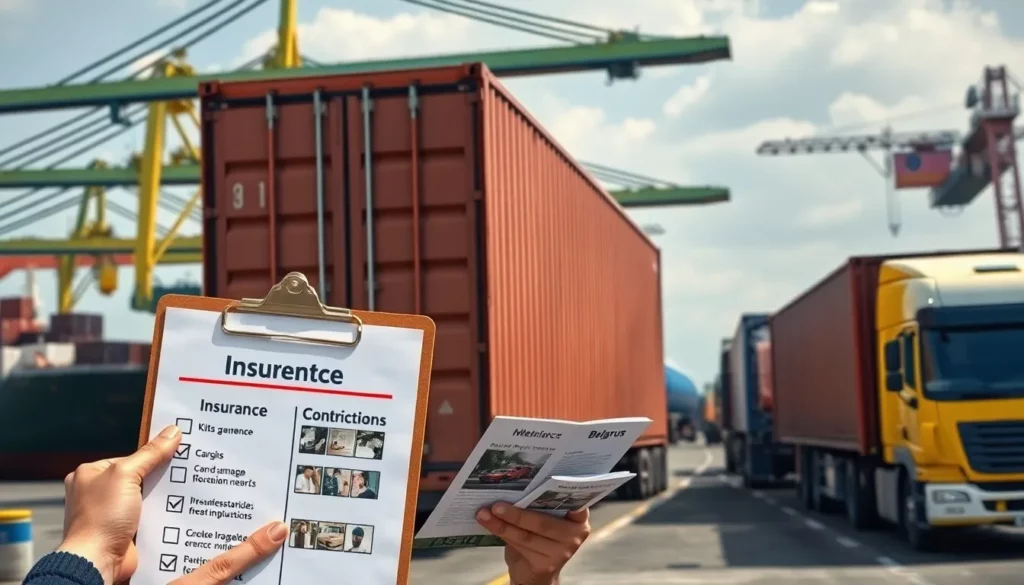
Protecting Your Shipment: Insurance, Compliance, and Restrictions
Shipping internationally carries risks, but proper insurance, compliance, and awareness of restrictions can safeguard your business.
Why Cargo Insurance Matters
Carrier liability is limited, so cargo insurance protects against loss or damage during transit.
Types of Insurance Coverage
Options include:
- All-Risk: Covers most losses (e.g., theft, water damage, fire) unless excluded; ideal for complex routes.
- Named Perils: Covers only listed risks, like collisions or sinking.
- Total Loss Only: Pays only for complete shipment loss.
Best Practice: Choose all-risk coverage for China-Belarus shipments due to multiple transport modes.
Calculating Costs and Filing Claims
Premiums are 0.3–0.5% of the CIF value + 10%. Include:
- Goods cost
- Freight charges
- Duties/taxes (for DDP)
- Optional profit margin
For claims:
- Document damage on receipt
- Notify insurer per policy terms
- Submit invoice, packing list, bill of lading, and damage photos
- Complete claim forms
Tip: Photograph cargo before and after transit to strengthen claims.
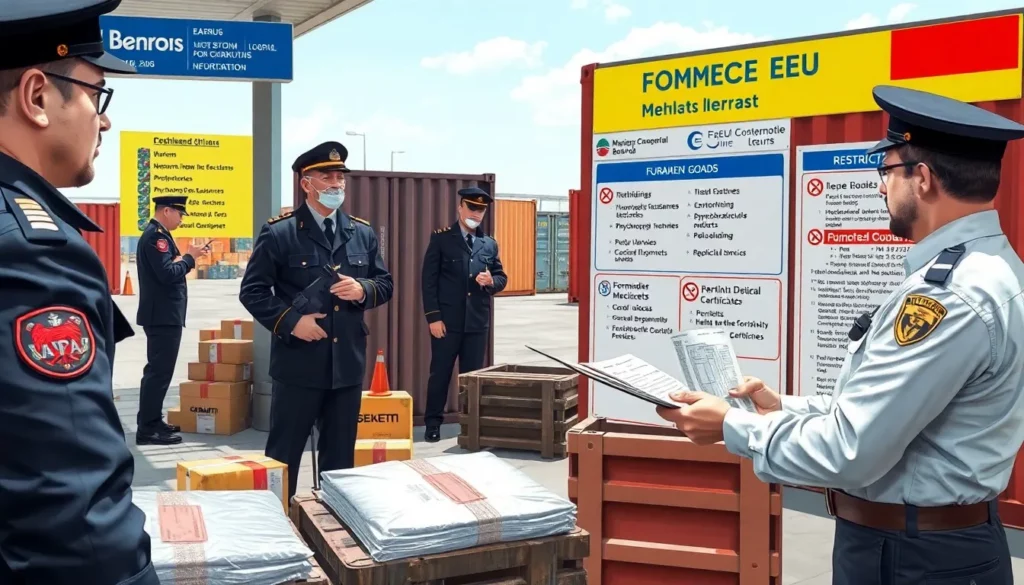
Prohibited and Restricted Items in Belarus
Belarus enforces strict import rules, aligned with EAEU regulations.
Restricted or Banned Goods
Common restrictions include:
- Weapons, ammunition, explosives
- Narcotics, psychotropic substances
- Hazardous chemicals
- Certain agricultural products
- Counterfeit or IP-violating goods
- Specific electronics or communication devices
EU sanctions also restrict exports like dual-use goods or military-related items to Belarus.
Important Warning: Non-compliance risks seizure, fines, delays, or legal action.
Avoiding Compliance Issues
Work with a forwarder or broker to:
- Verify permits for restricted items
- Ensure HS code accuracy
- Comply with EAEU and EU sanction rules
Example: Importing medical devices requires EAEU conformity certificates, which a broker can secure.
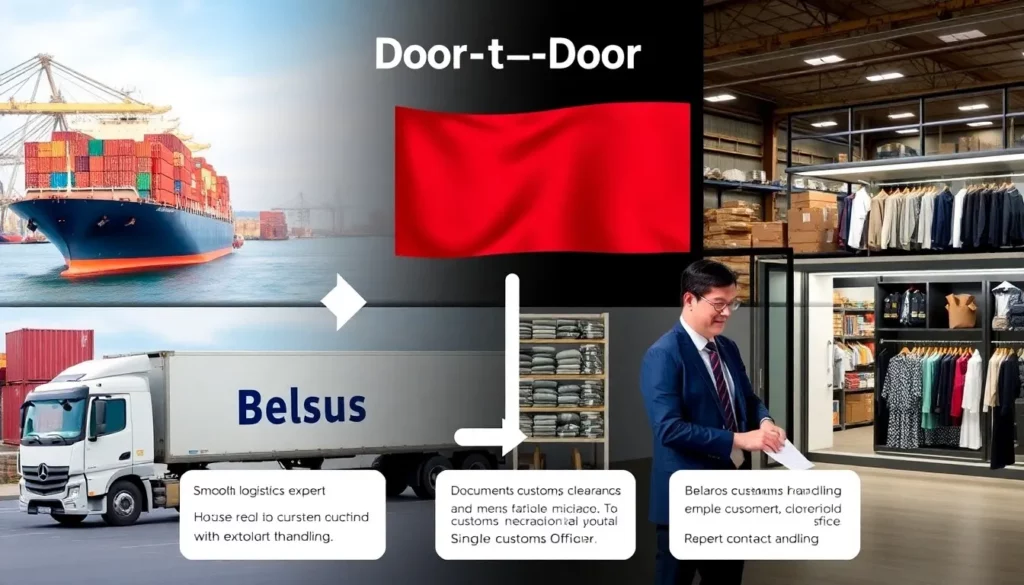
Benefits of Door-to-Door Shipping
Door-to-door services simplify logistics by managing the entire process from China to Belarus.
Simplifying B2B Imports
Advantages include:
- Single contact point
- Streamlined documentation
- Fewer errors across providers
- Expert customs handling
- Predictable pricing
Example: A retailer importing clothing uses DDP door-to-door to avoid managing Belarusian clearance.
DDP vs. Other Incoterms
DDP maximizes convenience but differs from:
- FOB: You handle shipping and clearance after the Chinese port.
- CIF: You manage Belarusian clearance and inland transport.
- DAP: You pay duties/taxes, unlike DDP.
Tip: Use DDP for simplicity if new to importing, but compare costs as suppliers may add premiums.
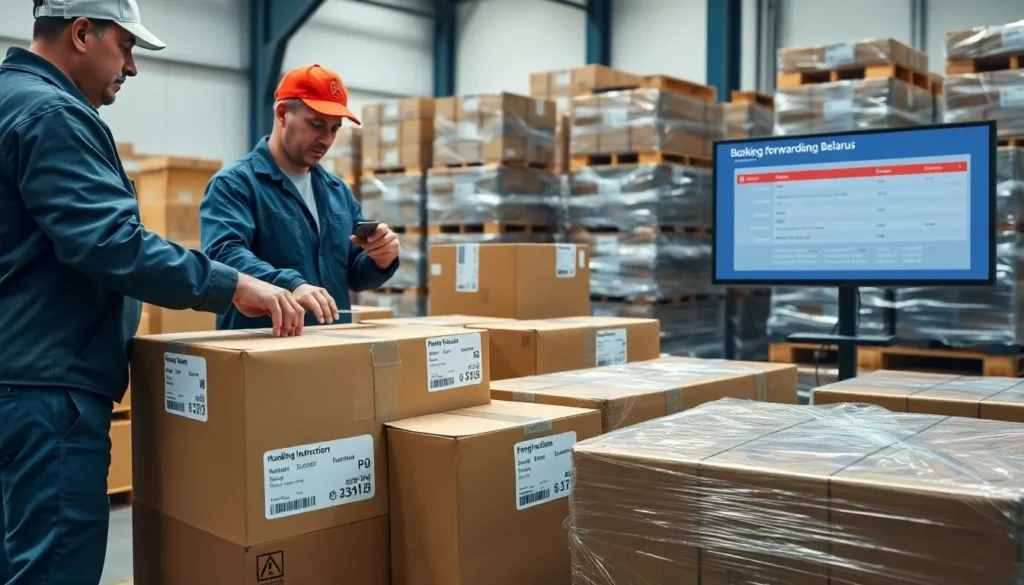
Managing Your Shipment Step by Step
A structured approach ensures your shipment moves smoothly from China to Belarus.
Step 1: Pre-Shipment Planning
Start strong with thorough preparation:
Booking Your Shipment
Follow these steps:
- Request detailed quotes from forwarders
- Compare cost, time, and services
- Confirm Incoterms with your supplier
- Book early, especially in peak seasons
- Provide precise cargo details
Tip: Book rail freight 7–10 days out, air 2–3 days, and sea 7–14 days.
Packaging and Labeling
Ensure your supplier:
- Uses robust packaging for international transit
- Labels clearly with shipping marks and handling instructions
- Declares hazardous materials correctly
- Uses compliant pallets
Important Warning: Poor packaging risks damage claims or customs delays.

Step 2: Preparing Shipping Documents
Accurate documents are critical for customs.
Export Documents from China
Include:
- Commercial Invoice
- Packing List
- Export Declaration
- Certificate of Origin
- Product-specific certificates
Tip: Cross-check documents for consistency to avoid clearance issues.
Bill of Lading vs. Air Waybill
Understand your transport document:
- Bill of Lading (Sea): Receipt, contract, and title document; negotiable or non-negotiable.
- Air Waybill (Air): Receipt and contract, non-negotiable, enables quick release.
- Rail Waybill (Rail): Contract for rail transport.
Special Documents
You may need:
- Phytosanitary or health certificates
- Conformity certificates
- Safety data sheets
Best Practice: Confirm EAEU document requirements with your broker.

Step 3: Clearing Customs
Customs clearance requires precision in both countries.
China Export Clearance
Steps include:
- Submit export declaration
- Provide commercial documents
- Pass inspections if required
- Gain clearance
- Load cargo
Tip: Allow extra time for Chinese inspections during peak periods.
Belarus Import Clearance
Process involves:
- File import declaration
- Submit documents (invoice, packing list, B/L or AWB)
- Pay duties/taxes
- Pass inspections
- Receive release
Using a Customs Broker
A broker can:
- File declarations
- Classify HS codes
- Calculate duties
- Handle customs communications
- Resolve issues
Best Practice: Hire a Belarus-licensed broker for EAEU expertise.
Step 4: Tracking and Final Delivery
Stay informed and plan for delivery.
Tracking Your Shipment
Use:
- Forwarder portals
- Carrier tracking
- Container or waybill systems
- Door-to-door platforms
Tip: Regular tracking helps you anticipate delays and prep for receipt.
Final Mile Coordination
Arrange:
- Inland transport to your address
- Delivery appointments
- Cargo inspection on arrival
- Damage documentation
- Delivery confirmation
Example: A Brest importer schedules warehouse staff based on real-time tracking updates.
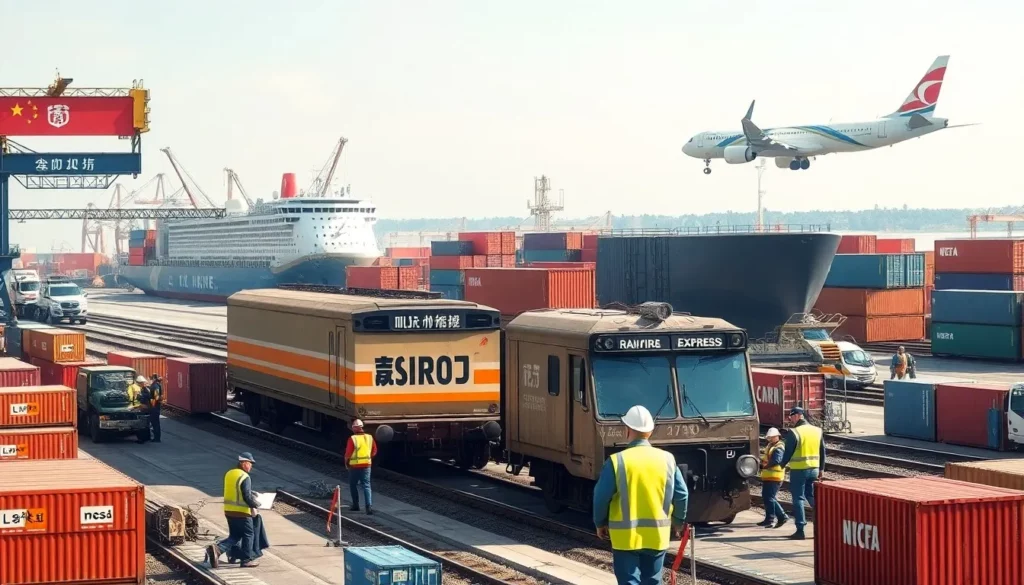
Conclusion:
A strong China-Belarus supply chain relies on smart shipping choices, clear documentation, and trusted partners. Work with an experienced freight forwarder to optimize costs, stay compliant, and ensure smooth delivery—setting your business up for reliable, efficient growth.
Frequently Asked Questions (FAQs)
1. How Do I Calculate Dutiable Value for Imports to Belarus?
| Step/Element | Description | Rate/Note |
|---|---|---|
| Dutiable Value | Use CIF value (Cost + Insurance + Freight) | – |
| Tariff System | Common Customs Tariff (EAEU) | – |
| Duty Paying Value | Goods cost + transport + insurance | – |
| Customs Duties | DPV × tariff rate (ad valorem, specific, or combined) | Depends on goods |
| VAT (Standard) | 20% on total (including duty) | 20% |
| VAT (Reduced) | For food and medicines | 10% |
| VAT (Telecom) | For telecom services | 25% |
| Excise Taxes | On alcohol, tobacco, or fuel | 25–100% |
Tip: Use an online EAEU tariff calculator to estimate duties based on your HS code.
2. What Causes Customs Delays from China to Belarus?
Delays often stem from:
- Incomplete or incorrect documents (e.g., invoices, certificates)
- Wrong HS code or cargo descriptions
- Supplier delays in production or booking
- Peak season congestion (Q4, pre-Chinese New Year)
- Restricted items lacking permits
- Customs staffing shortages
- Non-compliance with China’s 24-hour advance manifest rule
Important Warning: Double-check documents to avoid costly holdups.
3. Is Rail Freight Reliable Year-Round to Belarus?
Yes, rail freight via the China-Europe Railway Express is dependable, with a 31% traffic increase on the Northern Corridor through Belarus. It’s less prone to delays than sea freight, taking 12–18 days. Winter weather may occasionally disrupt schedules, but infrastructure supports year-round use. Rail suits medium-sized or bulk cargo needing balanced speed and cost.
Example: A textile importer relies on rail year-round for consistent 15-day deliveries to Minsk.
4. How Much Notice Is Needed to Book a Shipment from China?
Booking lead times vary:
- Rail: 7–10 days
- Air: 2–3 days
- Sea: 7–14 days
Add a week during peak seasons. Provide suppliers’ details, cargo specs, and bill of lading instructions. China requires 24-hour advance manifest filing for sea shipments.
Tip: Work with forwarders who can secure last-minute space during high-demand periods.
5. Can a Freight Forwarder Consolidate Multiple Suppliers’ Orders?
Yes, forwarders offer buyer’s consolidation, combining multiple suppliers’ goods into one container. This turns LCL into FCL, cutting costs and simplifying customs. Use FOB or FCA terms for export clearance. Benefits include:
- Lower shipping costs
- Reduced packaging waste
- Unified delivery and tracking
- Fewer customs transactions
- Less risk of damage or inspections
Best Practice: Choose a forwarder with Chinese warehousing for seamless consolidation.

